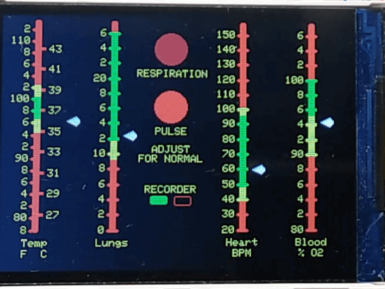
Bluetooth Low Energy 4.0 Module - HM-10
Bluetooth 4.0 module (Low Energy) compliant with ISM 2.4 GHz, master/slave operating mode with transparent data transmission, based on the Texas Instruments CC2541 chip with 256K of Flash memory and 8K of RAM.
Overview
This is a Bluetooth 4.0 (Low Energy) module compliant with ISM 2.4 GHz, with master/slave mode of operation and transparent data transmission, based on the Texas Instruments CC2541 chip with 256K Flash memory and 8K RAM.
It can be controlled through simple AT commands (via UART) or programmed with custom applications. Ideal for use in projects where Bluetooth connection is needed, such as between microcontroller and PC. Power supply ranges between 2V and 3.6Vdc.
Note: SMT mounting.
Tech specs
- Bluetooth 4.0 module compliant with ISM 2.4 GHz (HM-10)
- Uses Texas Instruments CC2541 SoC chip with 256K Flash memory and 8K RAM
- Supports master and slave modes
- RX standard gain: 19.6 mA
- TX -6 dBm: 24 mA
- Frequency: 2402 - 2483.5 MHz in 20 kHz steps
- Modulation and Data Rate: 1 Mbps, GFSK
- Number of channels: 40
- Output power: -23 to 4 dBm
- Reception sensitivity: -93dBm/-87dBm
- Stack: ATT, GATT, SMP, L2CAP, GAP
- Range: over 70 meters 10-bit ADC
- Serial interface: UART/SPI Wake-up interrupt, Watchdog Timer
- AES Security Coprocessor
- Power supply: ranges between 2V and 3.6V
- VDD ripple: 100mV max
- Current consumption (at 25°C with VDD = 3V):
- Power Mode 3 (External Interrupts): 0.4uA
- Power Mode 2 (SleepTimerOn): 0.9uA
- Power Mode 1 (3-μs Wake-Up): 235uA
- RX Standard Gain: 19.6mA
- TX -6 dBm: 24mA
- TX 0 dBm: - - Operating temperature: -40°C to +85°C
- Dimensions (mm): 27x13x1.6
- Weight: 5 grams.
Conformities
Get Inspired

Control the speed of a 12 volt computer fan using a PWM duty cycle

The future envisioned in the original Star Trek included, among other things, a shipboard sickbay with electronic monitors strangely reminiscent of the machines that medical personnel use today. To recreate a functional mini-replica of these displays, YouTuber Xtronical turned to a 2.8” TFT screen, a breadboard, and an Arduino Nano—noting that an Uno would also work. The LCD display nails the look of Dr. McCoy's device, and heartbeat sound can be played along with an onscreen flashing “PULSE” circle. A MAX30100 pulse/oximeter sensor and a temperature sensor take body readings, while a second DS18B20 is implemented to read ambient conditions for increased accuracy. It’s a fun Trekkie project, and Xtronical plans to elaborate on how it was made in future videos. A build of a working original Star Trek display with real sampled heart beat sound. Uses various sensors to get the readings from your body (via just your fingers) and displays them in the style of the 60's sick bay screen. This bare "Bones" system could be built into a model unit or even a replica Tricorder.





